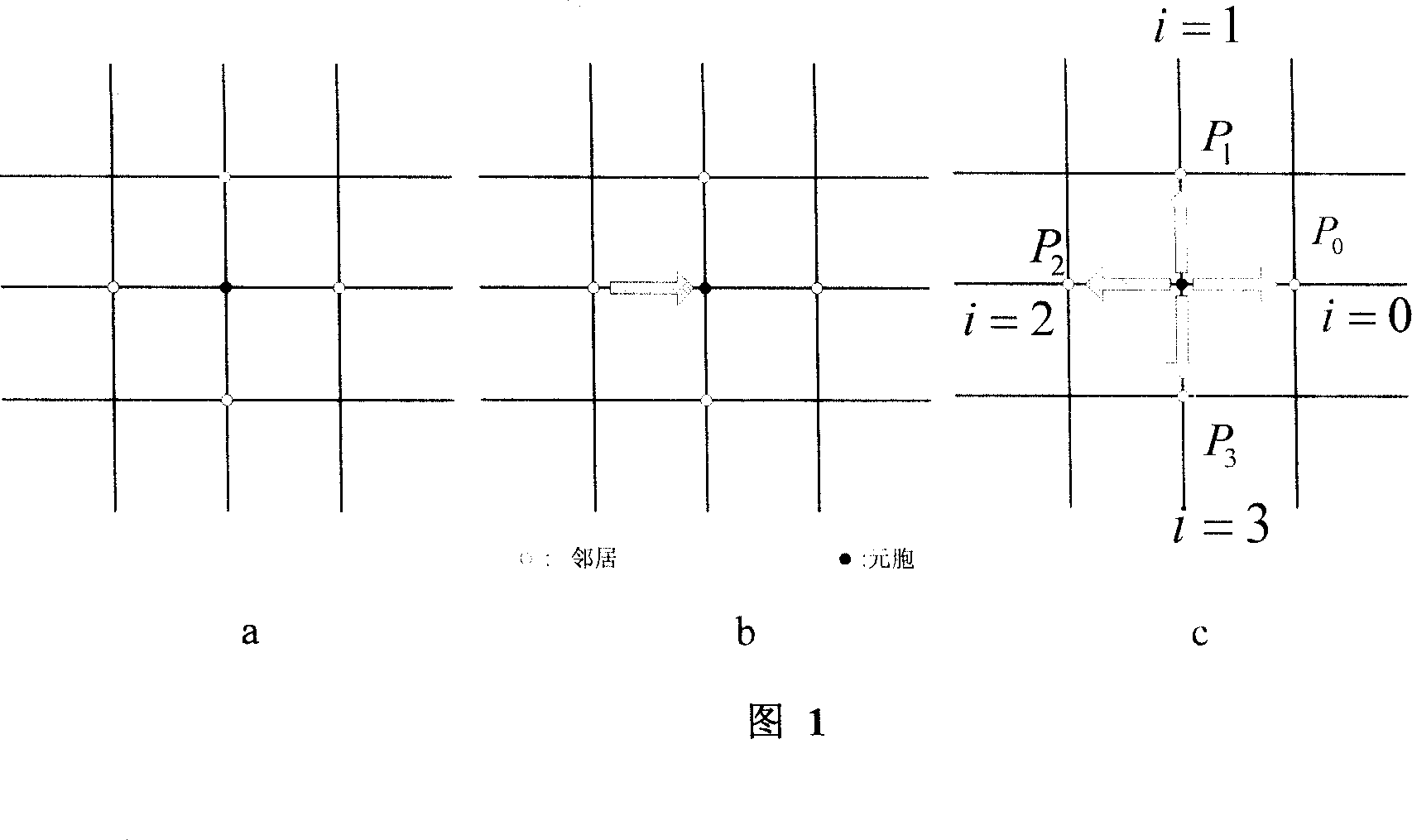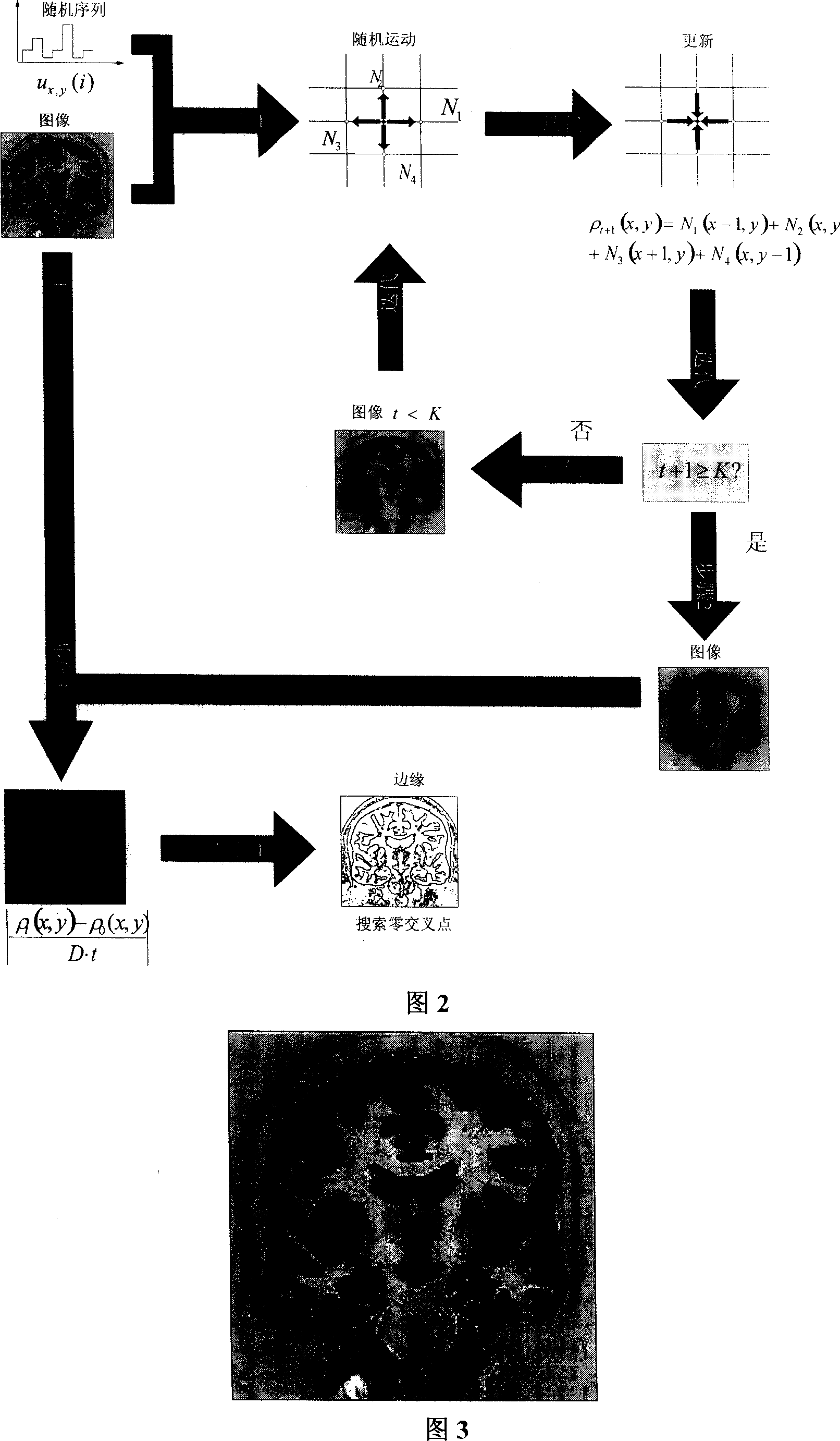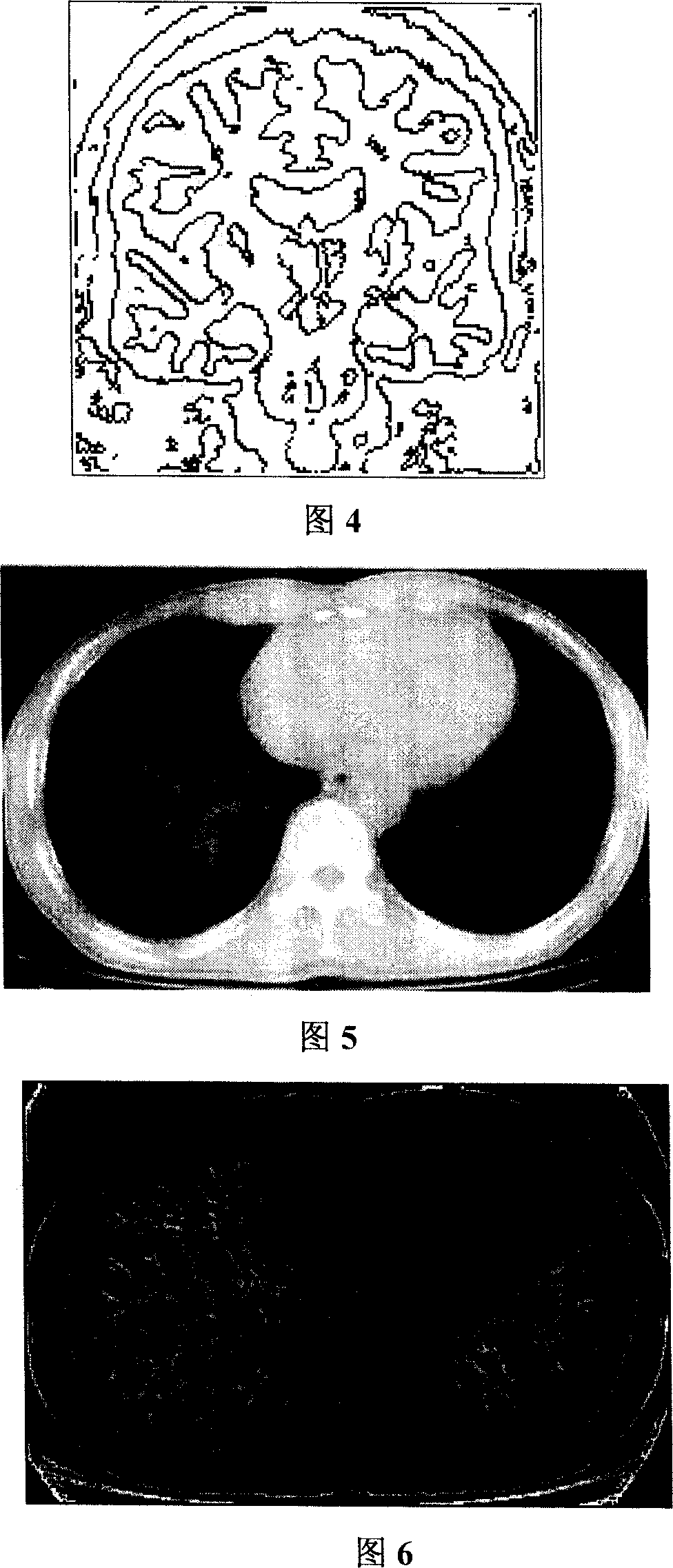Testing algorithm of image border based on cellular automata
A cellular automaton and image edge technology, applied in image analysis, image data processing, calculation, etc., can solve problems such as rounding errors, affecting processing results, and reducing edge detection accuracy
- Summary
- Abstract
- Description
- Claims
- Application Information
AI Technical Summary
Problems solved by technology
Method used
Image
Examples
Embodiment 1
[0043] Embodiment 1: Edge detection of nuclear magnetic resonance image
[0044]1) Each pixel of the image (as shown in Figure 3) is regarded as a cell; each cell and its four neighbors form a Moore neighborhood (as shown in Figure 1.a); each cell A state set is defined as the number of particles that may be contained in a cell; the number of particles contained in each cell is greater than 0 and less than 256.
[0045] 2) Initialization, defining that the initial state of each cell is equal to the gray value of the corresponding pixel in the image.
[0046] 3) At time t, generate a random sequence u x,y (i)={1, 2, 3, 4, ...}, where u x,y (i) The probability of equaling 1, 2, 3, and 4 is 1 / 4.
[0047] 4) Calculate the number of particles moving to its four neighbors in the cell N i ( x , y ) = Σ j = ...
Embodiment 2
[0067] Embodiment 2: edge detection of CT image
[0068] 1) Each pixel of the image (as shown in Figure 5) is regarded as a cell; each cell and its four neighbors form a Moore neighborhood (as shown in Figure 1.a); A state set is defined as the number of particles that may be contained in a cell; the number of particles contained in each cell is greater than 0 and less than 256.
[0069] 2) Initialization, defining that the initial state of each cell is equal to the gray value of the corresponding pixel in the image.
[0070] 3) At time t, generate a random sequence u x,y (i)={1, 2, 3, 4, ...}, where u x,y (i) The probability of equaling 1, 2, 3, and 4 is 1 / 4.
[0071] 4) Calculate the number of particles moving to its four neighbors in the cell N i ( x , y ) = Σ j = 1 ...
Embodiment 3
[0091] Embodiment 3: edge detection of digital image
[0092] 1) Each pixel of the image (as shown in Figure 7) is regarded as a cell; each cell and its four neighbors form a Moore neighborhood (as shown in Figure 1.a); each cell A state set is defined as the number of particles that may be contained in a cell; the number of particles contained in each cell is greater than 0 and less than 256.
[0093] 2) Initialization, defining that the initial state of each cell is equal to the gray value of the corresponding pixel in the image.
[0094] 3) At time t, generate a random sequence u x,y (i)={1, 2, 3, 4, ...}, where u x,y(i) The probability of equaling 1, 2, 3, and 4 is 1 / 4.
[0095] 4) Calculate the number of particles moving to its four neighbors in the cell N i ( x , y ) = Σ j = 1 ...
PUM
 Login to View More
Login to View More Abstract
Description
Claims
Application Information
 Login to View More
Login to View More - R&D
- Intellectual Property
- Life Sciences
- Materials
- Tech Scout
- Unparalleled Data Quality
- Higher Quality Content
- 60% Fewer Hallucinations
Browse by: Latest US Patents, China's latest patents, Technical Efficacy Thesaurus, Application Domain, Technology Topic, Popular Technical Reports.
© 2025 PatSnap. All rights reserved.Legal|Privacy policy|Modern Slavery Act Transparency Statement|Sitemap|About US| Contact US: help@patsnap.com



